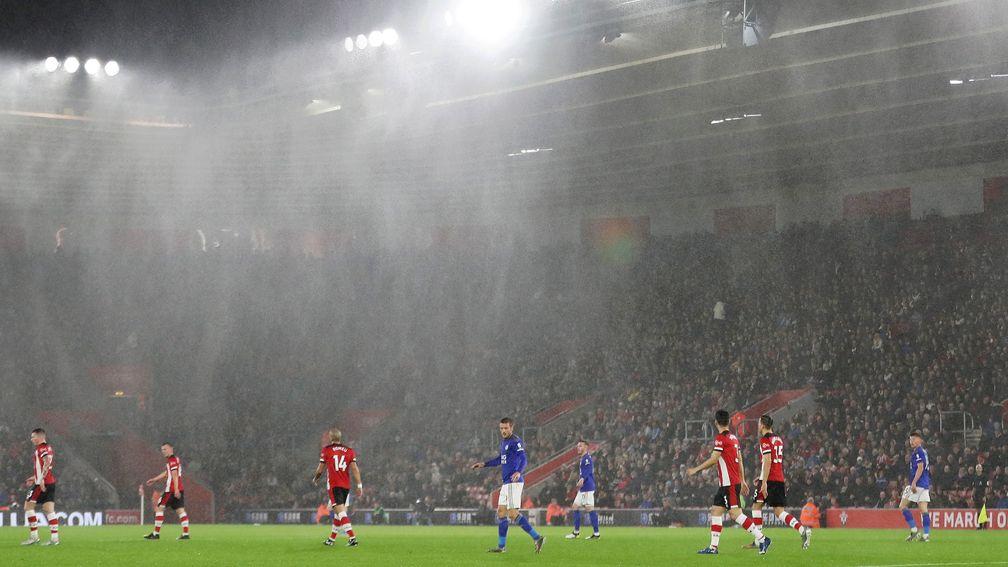Kevin Pullein: some football forecasts should wait until a study of the weather
More fab football philosophy and statistics from the Racing Post soccer boffin

On the last two Saturdays I was woken by the sound of rain rattling on my bedroom window and wind howling beyond. I did not want to get up and go outside but I did. And so, elsewhere, did many others, perhaps less reluctantly, to watch or play football.
In what way does the weather affect a match? It depends on the match. Weather has a progressively bigger impact as you move down the football pyramid – less in the Premier League than in the EFL, and then less in the Championship than in Leagues One and Two. Higher scores follow rainfall.
Over the last 22 seasons – 1997-98 to 2018-19 – goals per game in Leagues One and Two rose from 2.58 in August to 2.67 in October, after which they fell steadily to a low of 2.45 in February, then rose again to 2.51 in April.
The differences might seem small but they equate to a change of six per cent in the chance of over 2.5 goals in a match between October and February. In a randomly chosen contest the chance of over 2.5 goals would have been 50 per cent in October but only 44 per cent in February – fair odds would have been as short as evens in October and as long as 5-4 in February.
And all because of something that has nothing to do with the players, the referee, coaches or fans. Only when a computer programme schedules the fixture. October is the wettest month and February one of the driest months.
The main difference rain can make, I suggest, is to the condition of playing surfaces.
Premier League pitches are nearly always immaculate throughout a year. Only rarely is a Premier League fixture cancelled, and when one is the reason is usually that ice outside the ground would be a danger to spectators coming and going – not that there is any flaw in the weather-shielded, soil-heated playing surface.
In the Premier League there is enough money for clubs to keep pitches impeccable. Less in the Championship, and less still in Leagues One and Two.
Scores jump in May – there were 2.61 goals per game then in Leagues One and Two over the last 22 seasons – but for a reason that has nothing to do with the weather. In the last games of a season teams who still need points become ever more desperate, and their play becomes ever more open.
Otherwise scores in Leagues One and Two rise and fall almost perfectly in sync with rainfall. Met Office data covering the last three decades shows that average UK rainfall rose from 69 millimetres in August to 92 in October, after which it fell until it reached a low of 60 in February, then it started to rise again, albeit erratically.
Scores tend to be higher on wet pitches, lower on dry pitches. We have all watched on television as an old pro at a lower-league ground peers down from a gantry onto a rain-sodden pitch and declares that conditions are ideal for attackers but not for defenders. The impression he formed when he was playing seems to be right.
The next strongest connection between goals and weather is with temperatures. Average highs in degrees Celsius drop from 21 in August to seven in January and February, after which they rise again to 16 in May. Scores tend to plummet with temperatures. For most of a season goals per game in Leagues One and Two fall and then rise again closely in step with temperatures and rainfall.
This weekend 47 League One and League Two teams will join 31 from below the EFL in the first round of the FA Cup (Chichester have a bye to the second round as a result of Bury's expulsion). We are now in November, though, so we have entered a run of four months in which at those levels the weather will become progressively less conducive to high scores. Temperatures will plunge and there will be less and less rain. Incidentally, people always seem surprised when I tell them there is less rain in February than in August – but it is true.
Corners per game in Leagues One and Two go up and down with the weather in the same way as goals. Make-ups across the last 22 seasons were highest in October, lowest in February. Proportionately, the differences from month to month were almost identical for corners as for goals.
At these levels and below, corners and goals tend to be most plentiful in wet, warm weather and least plentiful in dry, cold weather. What happens in a match can be influenced meaningfully by what is going on in the sky above the players’ heads and how this affects the ground beneath their feet.
Like us on Facebook RacingPostSport
Published on 7 November 2019inKevin Pullein
Last updated 22:03, 7 November 2019
- This is what normally separates winners from losers in the Champions League
- Best Premier League summer transfers might not be who you think they are
- Kevin Pullein: How much will winning the title affect Liverpool?
- To discover how good Liverpool are we should consult the gods of ancient Egypt
- Adventurous play key to winning a fanless match | Thought for the week
- This is what normally separates winners from losers in the Champions League
- Best Premier League summer transfers might not be who you think they are
- Kevin Pullein: How much will winning the title affect Liverpool?
- To discover how good Liverpool are we should consult the gods of ancient Egypt
- Adventurous play key to winning a fanless match | Thought for the week